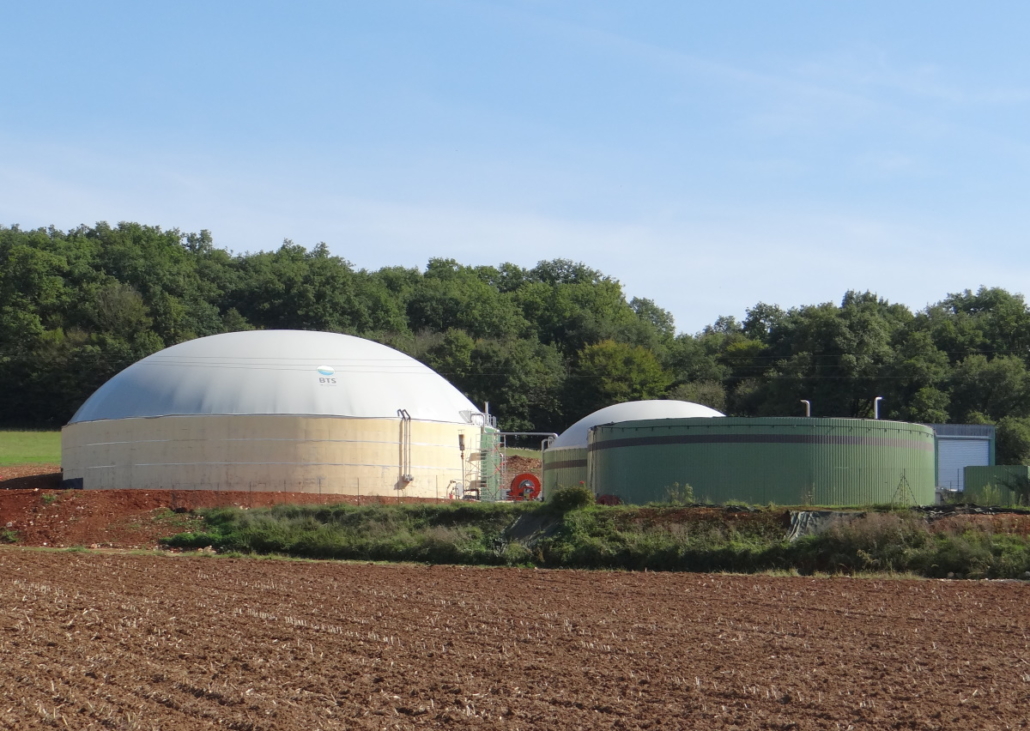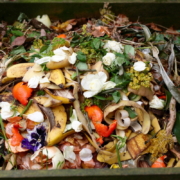How do you explain the sharp rise in methanization plants in recent years?
Yves Andres: Methanization is the breaking down of organic matter by bacteria which produces biogas in an anaerobic environment (absence of oxygen) through a process involving several steps. When left alone, organic waste naturally emits methane and carbon dioxide as it decomposes. Yet many sources of organic waste exist, such as communities, agrifood industries and agricultural activities. In addition to the waste management issue, the greenhouse effect of methane is 21 times greater than that of carbon dioxide. The fermentation of such large amounts of waste therefore presents a real risk for global warming and the environment!
Khaled Loubar: This is why some agricultural sites are directly equipped with methanizers, to prevent livestock manure from remaining in the air, and to control methanization. This is also the case for technical landfills. Today these centers are all equipped with biogas collection systems to avoid releasing these emissions into the atmosphere.
Can the biogas produced by methanization be used?
YA: This naturally occurring process has long been used to treat organic matter while also creating an energy carrier. The simplest procedure would be to burn the recovered biogas in a flare, thus dispersing heat and carbon dioxide into the atmosphere. But today the trend is obviously to harness the full potential of this resource.
How is it recovered?
YA: There are three levels of biogas recovery. The first is to simply generate heat by producing fuel for boilers. The second is to use co-generation engines to recover heat to produce electricity. The heat is used to heat water or buildings – especially on livestock farms – but also to keep the methanizer warm.
Since the process is functional between 30 and 40 °C, we need to add a little more energy in our climates. The heat produced by the co-generation engine is a possible source, which can create a self-powered system. The co-generated electricity is also used on-site or reinjected into the network. The third recovery level consists in purifying biogas to increase methane concentration and produce biomethane.
What are the steps involved in producing biomethane?
YA: When the process is well controlled, the recovered biogas contains between 40 and 60% methane. The rest consists of carbon dioxide and some corrosive contaminants such as hydrogen sulfide. In technical landfills, biogas can also contain siloxanes, which are organic molecules made of carbon and silica that, when burned, form silica crystals that damage engines. Biogas is therefore always treated to remove these contaminants and is sometimes purified to remove carbon dioxide to obtain biomethane.
KL: Apart from the microbiological aspects that we leave to other more specialized laboratories, we possess the expertise to address all the steps in the methanization process, including this separation phase. One of IMT Atlantique’s teams is therefore working on carbon dioxide capture to purify biogas and produce biomethane while using fewer solvents. Once separated, manufacturers can recover the carbon dioxide for various uses, and the biomethane to be injected into natural gas grids is conditioned, with compression and odorization, etc.
Does the variability of organic waste have an impact on the gas produced?
YA: Methane is a very simple molecule, composed of one carbon atom and four hydrogen atoms (CH4). Its composition does not change, regardless of whether it is produced by synthetic methanation, with biological methods or in the rumen of a cow. What differs is the purity of what is produced. Yet supply can be a problem. Agricultural biomass is mainly produced seasonally, but methanization reactors must operate year-round. Since organic materials are fermentable, they decompose and are difficult to store.
Another solution is gasification from dry biomass or solid recovered fuels. It is therefore necessary to choose the best solution based on the energy balance: while cow manure is clearly not worth drying, it may be interesting to dry other more valuable, high-potential raw materials.
The alternative is co-digestion, which mixes the input materials, or raw materials, used to feed the reactor. We then carry out laboratory tests to analyze the methanogenic potential of various organic substrates, with the objective of providing a mixture guaranteeing good biogas production yield.
What are the uses of biomethane?
YA: Part of the biogas is of course used in heat engines. It is not uncommon to see buses in Paris running on biomethane recovered from landfills. But methanization plants are much more focused on injection, with encouragement from operators like GRDF looking to increase green gas in their grid. By 2030, the share of renewable energies must represent 32% of energy consumption in France, and biogas will account for a growing proportion of the energy mix.
For farms, methanization can in fact become an additional source of income. Yet each added step in the process of refining biogas to obtain “injectable” biomethane for the grid costs energy and money. The more operators want purified gas, the more they will have to produce to cover their costs.
This of course raises many questions, since reaching a financial balance requires very large methanizers and considerable amounts of biomass to feed them. This potentially involves bringing biomass in from other sites, with significant energy costs, or even growing biomass intended solely for energy production, as has been observed in Germany. This is why energy audits – one of the technical tools we use in the laboratory – must be conducted on a case-by-case basis to determine whether the energy and economic balance is favorable.







